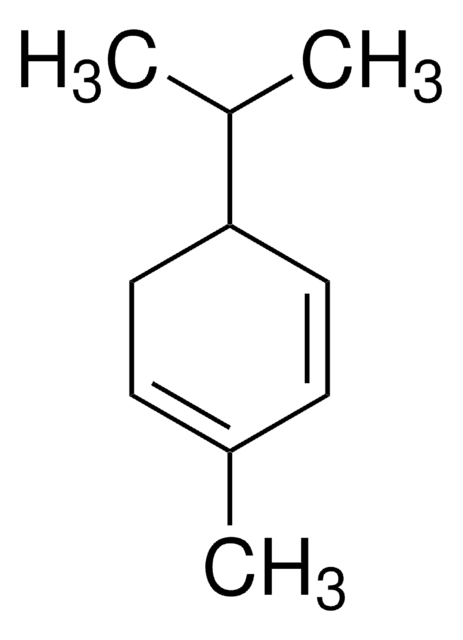87117
Nervonic acid
analytical standard
Synonym(s):
cis-15-Tetracosenoic acid, Selacholeic acid
About This Item
Recommended Products
grade
analytical standard
Quality Level
Assay
≥99.0% (GC)
shelf life
limited shelf life, expiry date on the label
technique(s)
HPLC: suitable
gas chromatography (GC): suitable
mp
42-43 °C (lit.)
format
neat
functional group
carboxylic acid
shipped in
ambient
storage temp.
−20°C
SMILES string
CCCCCCCC\C=C/CCCCCCCCCCCCCC(O)=O
InChI
1S/C24H46O2/c1-2-3-4-5-6-7-8-9-10-11-12-13-14-15-16-17-18-19-20-21-22-23-24(25)26/h9-10H,2-8,11-23H2,1H3,(H,25,26)/b10-9-
InChI key
GWHCXVQVJPWHRF-KTKRTIGZSA-N
Looking for similar products? Visit Product Comparison Guide
General description
Application
- Berry seed extract samples by gas chromatography equipped with mass spectrometer detector (GC-MSD).
- Human blood by isotope-dilution gas chromatography-negative chemical ionization-mass spectrometry (ID-GC-NCI-MS).
- Human plasma samples employed in the clinical smoking cessation study by GC combined with time-of-flight mass spectrometry operating under the electron ionization (EI) mode.
- Brain tissue samples by GC-MS.
Recommended products
Storage Class Code
11 - Combustible Solids
WGK
WGK 3
Flash Point(F)
230.0 °F - closed cup
Flash Point(C)
110 °C - closed cup
Personal Protective Equipment
Choose from one of the most recent versions:
Already Own This Product?
Find documentation for the products that you have recently purchased in the Document Library.
Customers Also Viewed
Our team of scientists has experience in all areas of research including Life Science, Material Science, Chemical Synthesis, Chromatography, Analytical and many others.
Contact Technical Service
